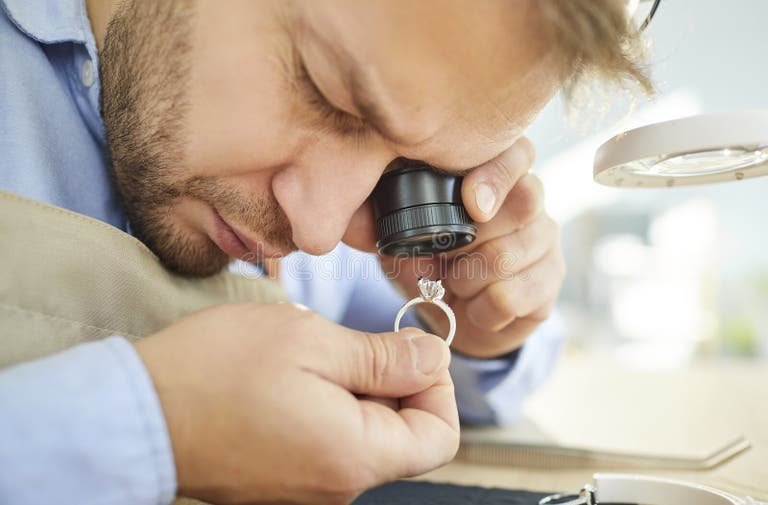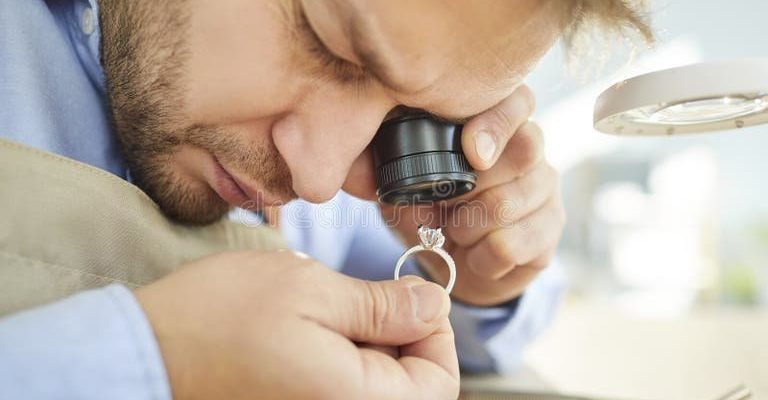
Using a magnifying glass is kind of like putting on a pair of glasses when you can’t see the fine print. It reveals details that your naked eye might miss. Whether you’re handling delicate electronics or assembling furniture, knowing how to use this handy device can improve your work tremendously. So, grab your magnifying glass and let’s explore how to make the most of it for inspecting small hardware parts!
Understanding the Basics of a Magnifying Glass
Before diving into the nitty-gritty, let’s cover what a magnifying glass actually is and how it works. At its core, this tool is a convex lens that enlarges the appearance of objects when you look through it. It’s similar to how a telescope helps you see the stars better by making them look bigger and clearer. The lens bends light rays, which creates a magnified image of the object you’re inspecting.
You’ll find that magnifying glasses come in different designs and strengths. The most common type is handheld, which is super convenient. Others include those that can be mounted on a stand, allowing you to keep your hands free for more intricate work. Some even have built-in lights to illuminate your workspace, making it easier to see fine details.
When choosing a magnifying glass, consider the magnification power. This is typically indicated by the number, like 2x or 5x. The higher the number, the more powerful the magnification, but keep in mind that too much magnification can distort the image. Generally, a good all-around strength for inspecting hardware parts is around 2x to 4x.
Choosing the Right Magnifying Glass for Your Needs
With so many options out there, you might be wondering how to select the best magnifying glass for inspecting small hardware parts. Here are a few key factors to consider:
- Magnification Level: For hardware inspection, look for a magnifying glass with a range of 2x to 4x. This offers a good balance of detail without distortion.
- Lens Size: Larger lenses provide a wider view, which can be helpful when working on more extensive assemblies.
- Lighting: If you often work in dim areas, consider a magnifying glass with built-in LED lights to illuminate your workspace.
- Durability: If you plan to use your magnifying glass frequently, look for one with scratch-resistant lenses and a sturdy frame.
For instance, if you’re working with delicate electronics, opting for a small, lightweight magnifying glass with a built-in light will help you inspect solder joints and circuit parts more effectively. On the other hand, if you’re assembling furniture or larger hardware, a larger, more stable lens might be the best choice.
How to Hold a Magnifying Glass Properly
Now that you’ve picked out your magnifying glass, it’s time to learn how to use it effectively. Holding this tool correctly can make a huge difference in your inspection process. Here’s how to do it:
1. Keep a Comfortable Distance: Hold the magnifying glass at a distance of about 5 to 10 inches from the object you’re inspecting. Adjust as necessary to find the sweet spot where the image is clear.
2. Stabilize Your Hands: If you’re dealing with very small parts, consider using a third hand tool or a vise. This will keep the parts steady and make it easier to inspect them without shaking.
3. Use Natural Light: When possible, position yourself near a window or under bright lights. Good lighting can enhance the visibility of tiny details, making them easier to see through the magnifying glass.
4. Adjust Your Angle: Sometimes, tilting the lens at a slight angle can help reduce glare and reflect light better, revealing more detail. Play around with the angle until you find what works for you.
Holding the magnifying glass correctly not only improves visibility but also allows you to inspect your hardware parts carefully, spotting any issues that need attention.
Inspecting Hardware Parts: Step-by-Step
Now let’s walk through the actual process of inspecting small hardware parts. Here’s a step-by-step guide for getting the most out of your magnifying glass:
1. Gather Your Tools: Aside from the magnifying glass, collect any small tools you’ll need, like tweezers or a small screwdriver.
2. Clean the Parts: Make sure the hardware parts are clean and free of dust or debris. Use a soft cloth or a small brush to remove any particles that could hinder your inspection.
3. Position the Part: Place the hardware on a clean, flat surface. If it’s a tiny screw or a circuit board, make sure it’s secure and won’t move around.
4. Use the Magnifying Glass: Bring the magnifying glass up to your eye, holding it steadily over the hardware. Look through the lens and check for any defects, scratches, or signs of wear.
5. Take Notes: If you find anything that raises concern, jot it down. This helps you keep track of what needs to be replaced or repaired later on.
This thorough method will ensure that you don’t miss any critical details, whether you’re fixing a computer or assembling a model kit.
Common Issues When Using a Magnifying Glass
While a magnifying glass can make inspections easier, there are some common pitfalls to watch out for. Here are a few issues to consider:
– Distortion at Higher Magnification: If you’re using a high-powered magnifying glass, be aware that it might distort the image. If things look wavy or unclear, try adjusting the distance or switching to a lower magnification.
– Eye Fatigue: Staring through a magnifying glass for long periods can lead to eye strain. Take regular breaks and focus on distant objects to let your eyes relax.
– Poor Lighting Conditions: Insufficient light can make it tough to see fine details. If you notice that you’re squinting or straining, adjust your position or get a magnifying glass with built-in lighting.
– Shaky Hands: If you find it hard to hold your magnifying glass steady, consider resting your hands on the table or using a magnifying stand. This can minimize movement and improve visibility.
Being aware of these issues can help you troubleshoot and make your inspection process smoother.
Exploring Alternatives to Magnifying Glasses
While a magnifying glass is a fantastic tool, it’s not the only option for inspecting small hardware parts. Here are a few alternatives you might consider:
- Magnifying Lenses or Jeweler’s Loupe: These are small, handheld lenses that offer higher magnification power. They’re often used in jewelry making but can be great for inspecting tiny screws or intricate details.
- USB Digital Microscope: This high-tech option connects to your computer and provides an amplified view on the screen. It’s perfect for serious hobbyists or professionals who need precision.
- Headband Magnifier: This hands-free option lets you wear a magnifying lens on your head, freeing up your hands for work. It’s especially useful for tasks that demand attention for long periods.
Each of these tools has its pros and cons, and the best choice depends on your specific needs. If you’re just starting, a simple magnifying glass is often enough, but you can explore these alternatives as you become more involved in hardware inspection.
Using a magnifying glass for inspecting small hardware parts can elevate your DIY or repair projects from ordinary to extraordinary. It allows you to spot the tiniest details that might otherwise be missed, reducing the risk of making mistakes. Whether you’re working with electronics, model kits, or anything in between, having the right tools—and knowing how to use them—can make all the difference.
Remember to choose a magnifying glass that fits your needs, hold it correctly, and be mindful of common issues. And if you ever feel limited by your magnifying glass, don’t hesitate to explore some alternatives. Happy inspecting!
